Hoi An, located in Quang Nam Province, Vietnam, stands as a testament to the fusion of indigenous and foreign cultures, particularly Chinese and Japanese influences.
This historic town features over 1,100 well-preserved timber-framed buildings with brick or wooden walls, tiled roofs, and intricate carvings. Along its narrow, pedestrian-friendly streets, you’ll find ancient pagodas, bustling markets, family cult houses, and trading hubs—all showcasing Hoi An’s legacy as a once-thriving regional port.
As a UNESCO World Heritage Site, Hoi An is recognized for its cultural exchange (Criterion ii) and preservation of an Asian trading town (Criterion v).
Best time to visit Hoi An
Like most other destinations in Vietnam, Hoi An experiences a tropical climate with two distinct seasons: the dry season (February to August) and the rainy season (September to January). Each season is characterized by distinct weather patterns.
The dry season is warm, sunny, and mostly rain-free. From May to August, temperatures rise, sometimes exceeding 35°C (95°F), making it ideal for beachgoers but potentially too hot for sightseeing. Meanwhile, the rainy season brings heavy showers and occasional flooding, especially in October and November. While rain may make it difficult to explore the city, Hoi An during this period sees fewer tourists and lower prices.
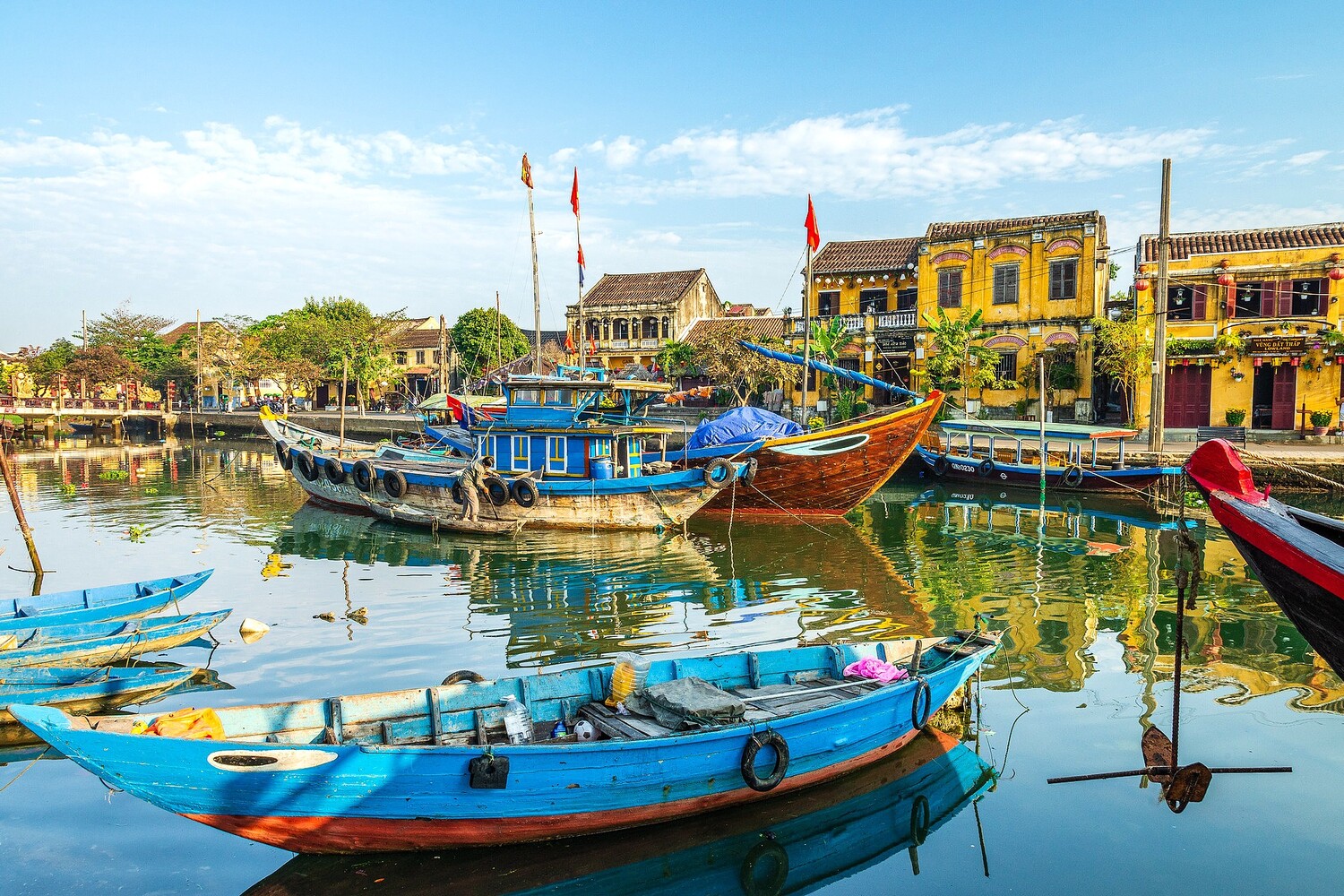
The best time to visit Hoi An is between February and April when temperatures range from 22°C to 28°C (72°F to 82°F), and the weather is pleasantly warm with little rainfall. For the best experience, visit in March or April for clear skies, comfortable temperatures, and vibrant festivals. If you enjoy a quieter atmosphere and don’t mind some rain, December to January can also be a good time to visit Hoi An.
Transportation options to get to Hoi An
Hoi An is located in Central Vietnam, specifically on the South Central Coast, making it accessible from other major cities. It’s approximately 900 km (560 miles) from Ho Chi Minh City (HCMC) and 800 km (497 miles) from Hanoi. Since Hoi An doesn’t have an airport or a train station, most visitors arrive via Da Nang, the nearest major city.
Da Nang International Airport (DAD) is the closest airport to Hoi An, located about 28 km (17 miles) northwest. DAD Airport receives both domestic and international flights. Flight ticket prices to Da Nang from Hanoi and HCMC cost from 750,000 to 2,500,000 VND (30 to 100 USD) one way, depending on the airline, season, and booking time.

From Da Nang to Hoi An, travelers have several transportation options:
- Taxi or private car: 400,000–650,000 VND/ride (15–25 USD); 40–50 minutes.
- Shuttle bus: 130,000–180,000 VND/seat (5–7 USD); 45–65 minutes.
- Motorbike rental: 110,000–130,000 VND/day (4–5 USD); 40–50 minutes.
No matter which option you choose, reaching Hoi An from Da Nang is quick and easy, with chances to see the ocean along the way.
Where to stay in Hoi An
Hoi An offers a wide range of accommodations, from luxurious resorts to budget-friendly homestays, ensuring every visitor finds a place that suits their needs. High-end hotels typically range from 2,500,000 to 7,500,000 VND (100 to 300 USD) per night, while budget options start as low as 250,000 to 750,000 VND (10 to 30 USD) per night.
Can you spot the similarities among many resorts and hotels in Hoi An?
Most accommodations in Hoi An feature a fusion of Chinese, Japanese, and traditional Vietnamese architecture, especially in the Ancient Town. Tiled roofs, turmeric-yellow walls, and moss-covered exteriors explicitly reflect the town’s rich history.
Note that there are two main areas to stay in Hoi An: Ancient Town and the beach, which is about 5 km away. If you want to be surrounded by history, stay in Ancient Town. If you prefer a relaxing seaside experience, choose a beachside resort.
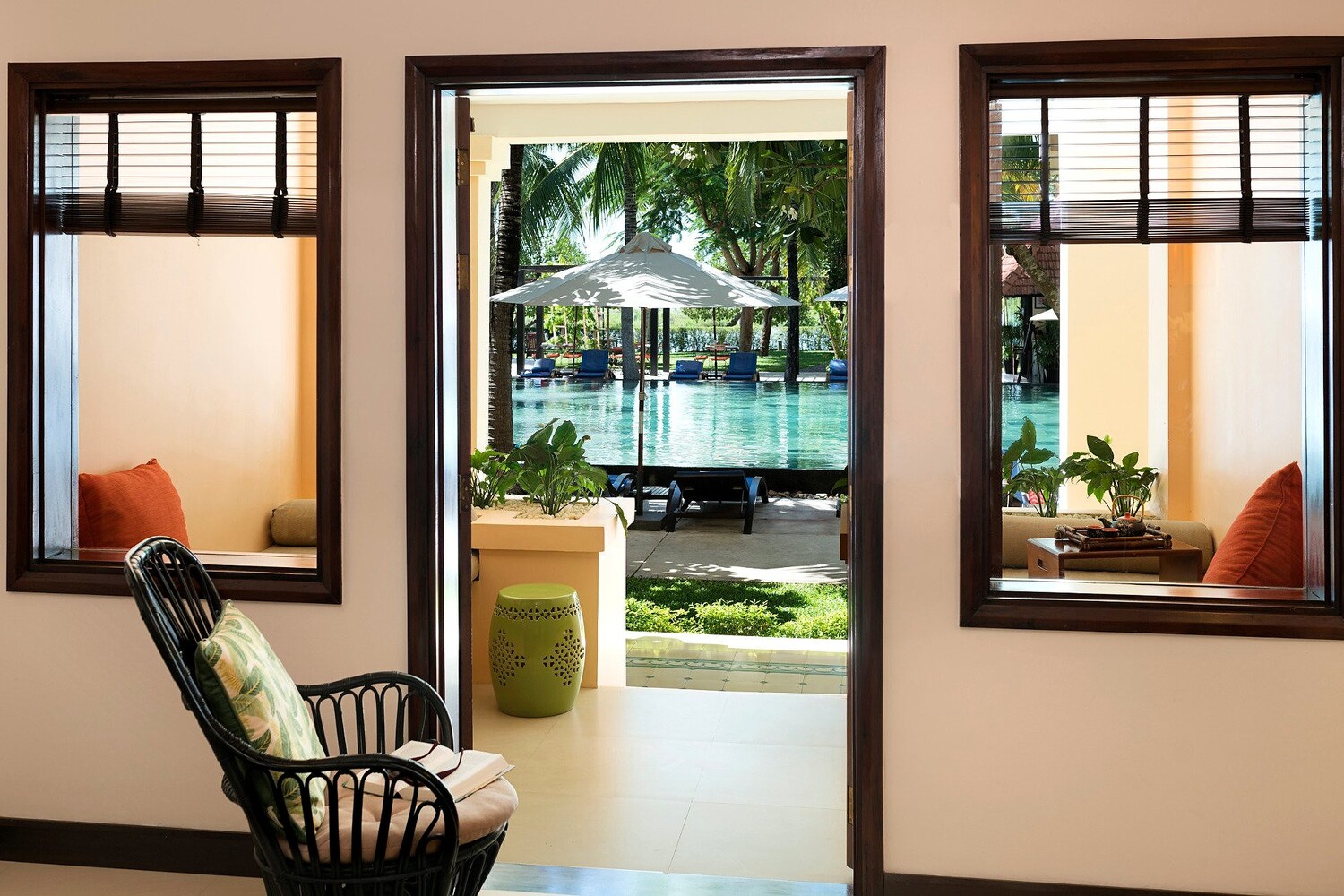
Some of the best hotels in Hoi An include:
- Anantara Hoi An: Elegant, French colonial architecture, sits along the river.
- La Siesta Hoi An: Blending nature, heritage, and luxury for a tranquil retreat.
- Allegro Hoi An: Traditional Vietnamese architecture, near the Japanese Bridge.
- Hadana Boutique Hoi An: Resort rooms, elegant décor with warm neutral tones.
Top 5 things to do in Hoi An: Your Ultimate Guide
Wondering what to do in Hoi An? This charming town offers stunning architecture, vibrant culture, scenic rivers, and unforgettable experiences.
1. Check in temples and pagodas
Hoi An is teeming with temples and pagodas that reflect the town’s diverse heritage. These popular attractions offer a glimpse into the spiritual and architectural influences of the Vietnamese, Chinese, and Japanese communities that once thrived here.
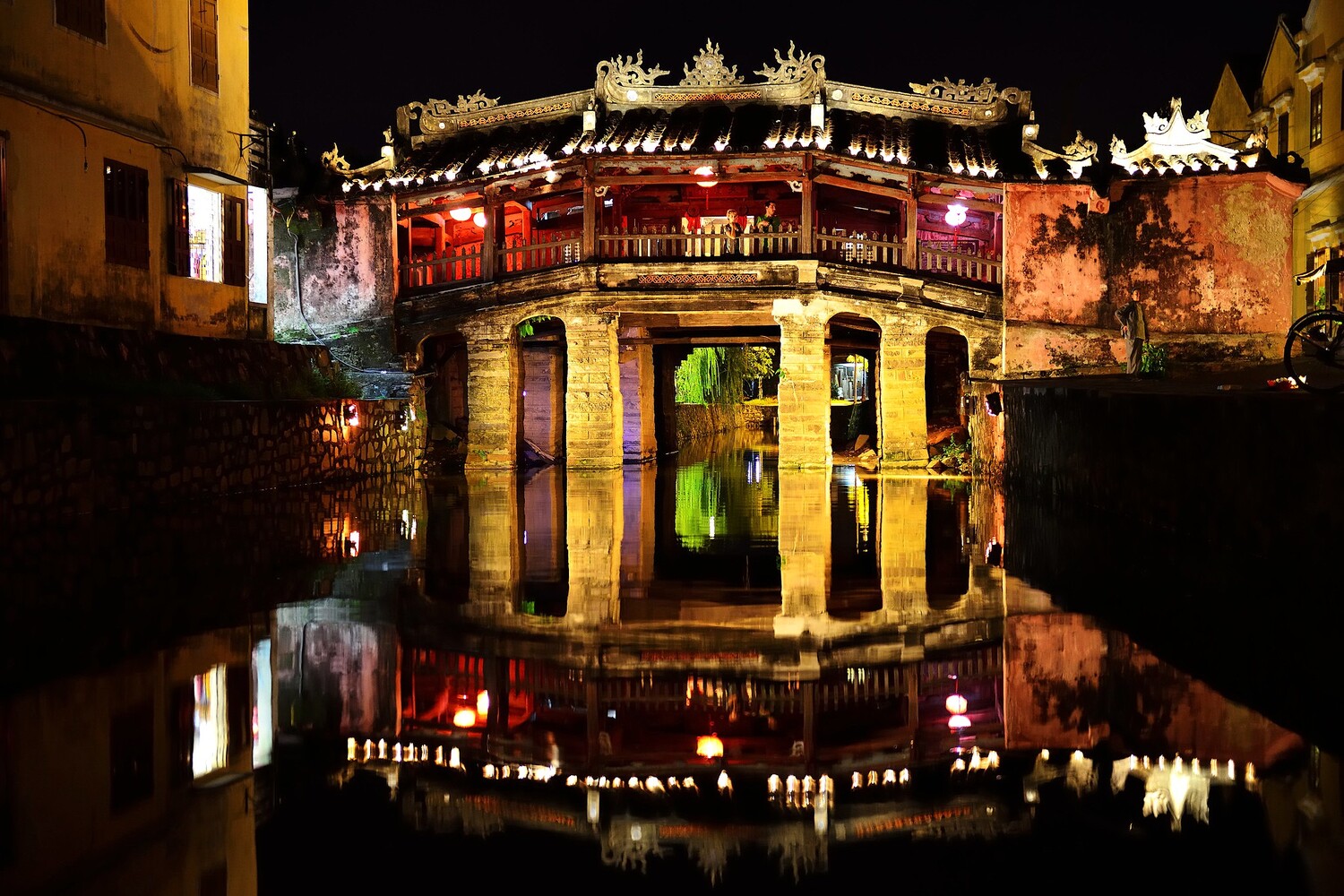
– Japanese Covered Bridge: The Japanese Covered Bridge (Chua Cau) dates back to the 17th century. It symbolizes the cultural fusion of the town. The bridge was built by Japanese merchants, featuring intricate carvings and a small temple dedicated to the god of protection—A fun fact: the Japanese Covered Bridge is featured on the back of the 20,000 VND banknote.
– Fujian Assembly Hall: Originally built in 1690 by Chinese traders from Fujian Province, China, this assembly hall (Phuc Kien) is dedicated to Thien Hau, the sea goddess who protects sailors. The hall is famous for its grand ceramic-tiled roof, dragon statues, and intricately carved altars, offering visitors a striking example of Chinese-Vietnamese architecture.
– Quan Cong Temple: Dedicated to Quan Cong (or Guan Gong/Guan Yu), a legendary Chinese general, this temple showcases exquisite golden statues, red lacquered pillars, and delicate wood carvings. Since its initial construction in 1653, Quan Cong Temple has been renovated six times. It’s a serene place to learn about Confucian values and warrior spirit.
– Tan Ky House: A well-preserved 200-year-old merchant house, Tan Ky House reflects a blend of Japanese, Chinese, and Vietnamese architectural styles. Visitors can admire its antique furniture, intricate carvings, and historical artifacts. Today, the homeowner still lives on the upper floor of the house, while the ground floor is open to visitors.
– Teh Dar Show: The Teh Dar Show at Hoi An Lune Center is a must-see. This captivating performance brings audiences into the world of Vietnam’s tribal culture through a traditional bamboo circus, tribal music, and acrobatics. Set in an iconic bamboo dome-shaped theater, the show is a mesmerizing fusion of art, storytelling, and cultural heritage.
2. Stroll around the ancient town
A visit to Hoi An wouldn’t be complete without a leisurely walk through its Ancient Town. With its well-preserved architecture, lantern-lit streets, and vibrant atmosphere, strolling through Hoi An Ancient Town is like stepping back in time.
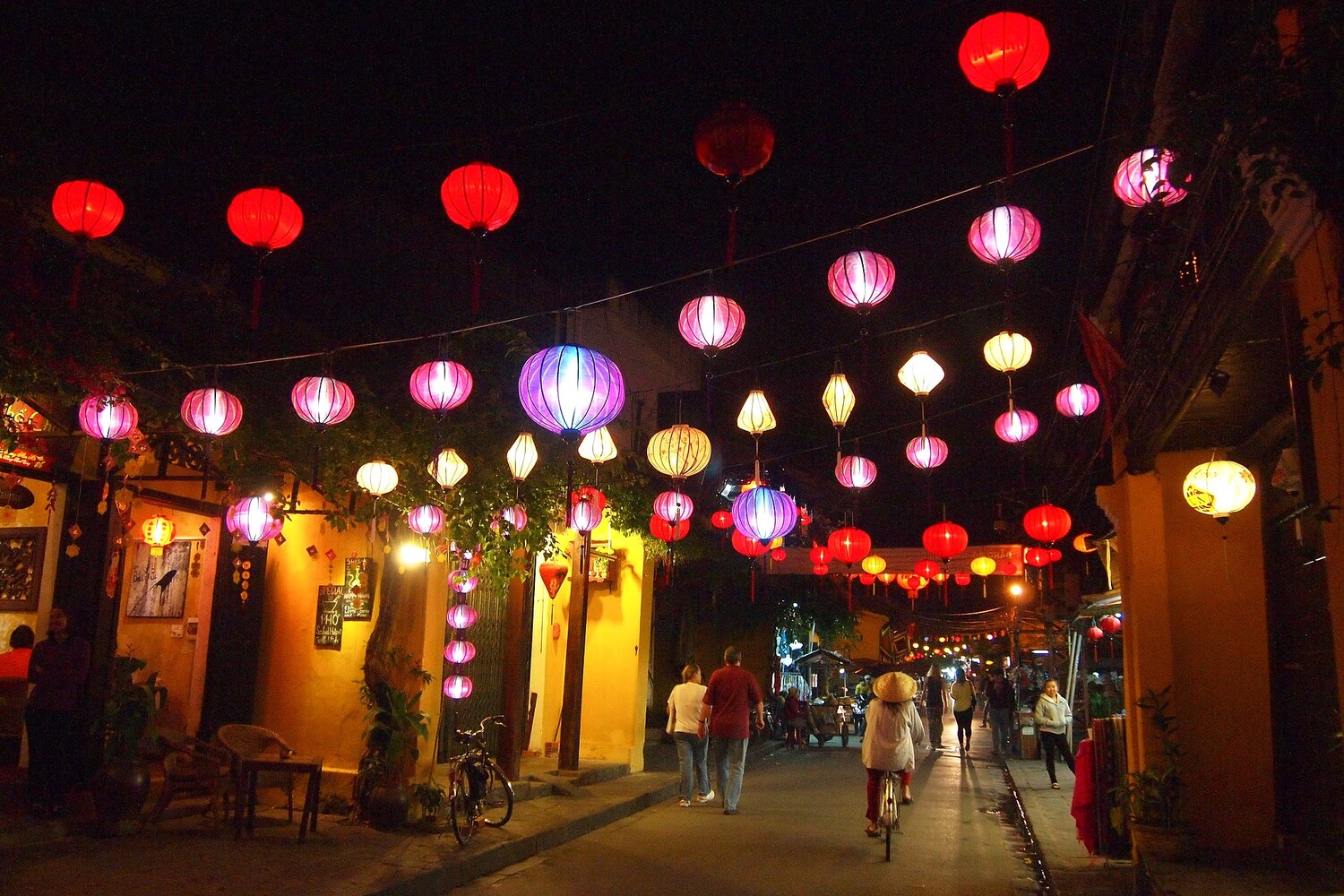
– Admire the lanterns at night: Hoi An is famous for its lantern-lit evenings, and nothing is more magical than witnessing the town illuminated by colorful lanterns. If you visit during the Hoi An Lantern Festival, held every full moon (the 14th day of the lunar month), you’ll see the streets glowing with floating lanterns on the Thu Bon River, creating a mesmerizing scene.
– Explore the Hoi An Night Market: Located on Nguyen Hoang Street across from the Japanese Covered Bridge, Hoi An Night Market is a must-visit for food lovers and shoppers. You can sample local specialties or browse stalls selling handmade crafts and souvenirs. Hoi An Night Market operates daily from 5 PM to 10 PM and can be very crowded later in the evening.
– Relax at cafés, restaurants, and bars: Hoi An Ancient Town is dotted with charming cafés, restaurants, and bars, offering the perfect break from exploring. Enjoy a Vietnamese coffee, a refreshing cocktail, or a delicious meal while soaking in the town’s tranquil riverside views. Among the many great bars and pubs in Hoi An, some popular spots include:
- Hoi An T/T Cocktail Bar
- Shamrock Irish Pub
- Cowboy Bar
- 3 Dragons Sports Bar
- Lenco Cafe & Bar
- Mr. Bean Bar
3. Join a boat tour on Thu Bon River
A boat tour on the Thu Bon River is one of the best ways to experience Hoi An’s natural beauty. Whether you choose a day cruise, a lantern-lit night tour, or an exciting coconut forest basket boat ride, each option offers a unique perspective of this town.

– Day Boat Tour: A typical day tour on the Thu Bon River includes stops at traditional craft villages such as Kim Bong Carpentry Village and Thanh Ha Pottery Village, where visitors can observe local artisans at work. Along the way, you’ll witness picturesque fishing villages, lush rice fields, and distant mountain ranges. Many tours include lunch on board or at a riverside restaurant, allowing you to relax while taking in the tranquil scenery.
– Night Boat Tour: For a truly magical experience, join a Thu Bon River night boat tour, where you can release colorful paper lanterns onto the water. This tradition, tied to the Hoi An Lantern Festival, symbolizes good luck and wishes for the future. Floating down the river with the glow of lanterns reflecting off the water is an unforgettable sight.
– Coconut Forest Basket Boat Tour: For a more adventurous water experience, take a basket boat tour in the Bay Mau Coconut Forest, located just outside Hoi An. These unique round bamboo boats navigate through mangrove-lined waterways, offering a fun and interactive experience. Highlights include watching locals perform boat-spinning tricks, learning traditional fishing techniques, and even trying your hand at paddling.
4. Get clothes or shoes tailor-made
Hoi An is also famous for its tailoring industry. What makes Hoi An’s tailoring special is the level of craftsmanship and personalization—tailors here create garments that fit perfectly, using premium fabrics and expert techniques. The experience is bespoke, allowing you to choose the fabric, style, and design details that suit your taste.
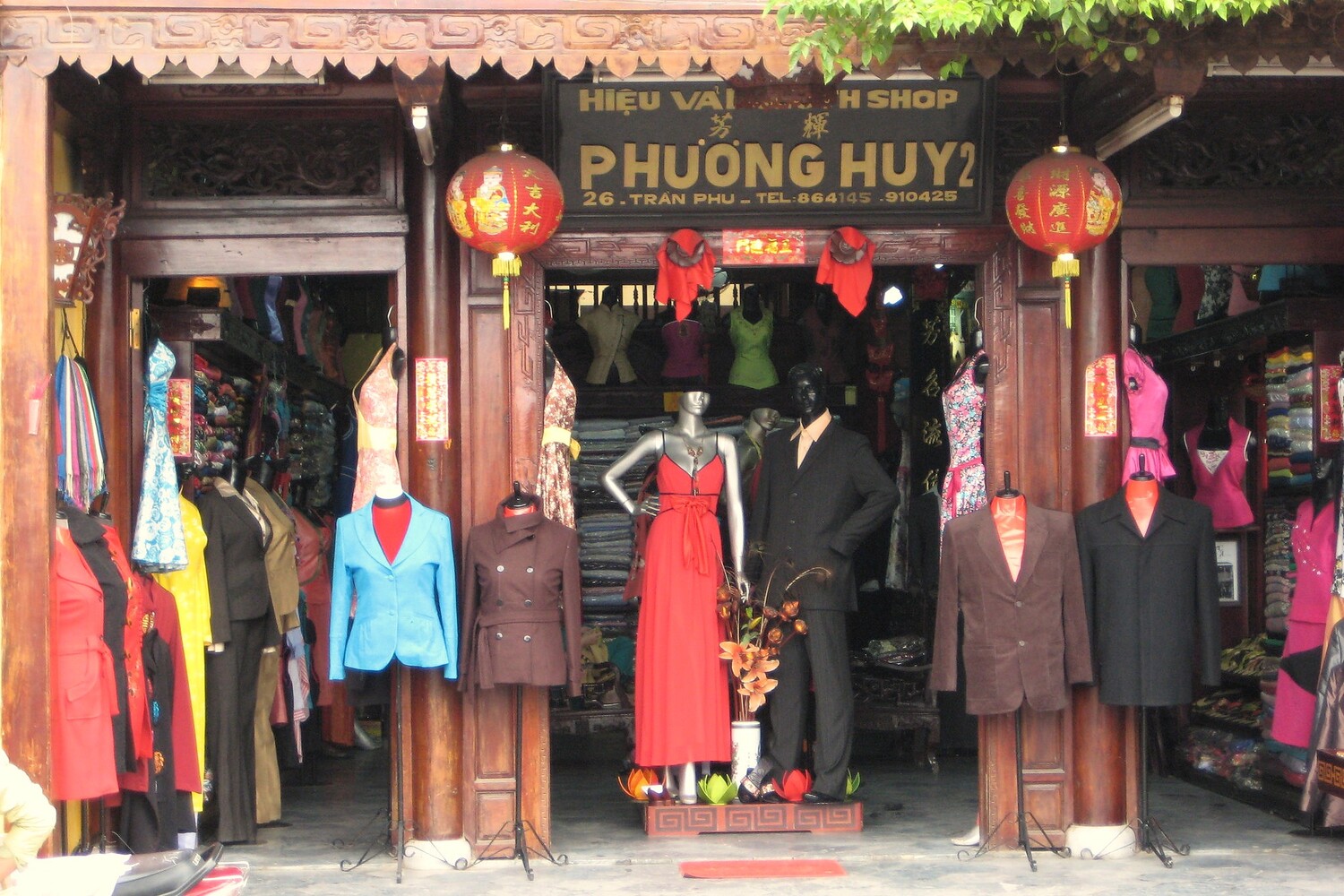
One of the best things about Hoi An’s tailor shops is their unbeatable efficiency. You can have a suit, dress, or pair of shoes custom-made in as little as 24 hours (depending on the place). Prices are affordable, with simple dresses starting at 750,000 VND (30 USD), tailored suits ranging from 2,500,000 to 7,500,000 VND (100–300 USD), and handmade leather shoes for around 1,800,000 to 2,500,000 VND (70–100 USD).
If you’re short on time, many shops offer domestic shipping, so you can have your custom-made items delivered straight to your home after you’re back from the trip.
Popular choices for tailor-made fashion in Hoi An include:
- Bespoke suits and dresses
- Casual linen shirts and summer dresses
- Leather boots, sandals, and custom-fit shoes
Beyond clothing and shoes, Hoi An also offers custom-made jewelry. Many couples choose to have rings or personalized jewelry pieces crafted as souvenirs. Notable jewelry shops include Lotus Jewellery and Water Lily Silver Jewellery.
5. Visit the beaches near Hoi An
Hoi An has some of the best beaches in Vietnam, offering a perfect escape for those seeking sun, sand, and relaxation. Whether you prefer a lively beachfront atmosphere or a secluded island retreat, Hoi An has something for everyone.

– An Bang Beach: An Bang Beach is Hoi An’s most popular beach, known for its soft white sand, clear blue waters, and vibrant beachside scene. It’s an ideal spot for swimming, sunbathing, and water sports like paddleboarding and surfing. Lined with charming beach bars and seafood restaurants, An Bang offers a lively atmosphere. Many visitors enjoy a cold coconut or fresh seafood platter while watching the sunset over the ocean.
– Cua Dai Beach: Just a few kilometers from Hoi An’s center, Cua Dai Beach boasts long stretches of golden sand and calm waters, making it perfect for a peaceful getaway. While erosion has affected parts of the beach, there are still areas where visitors can relax under palm trees and take in the tranquil coastal views. Cua Dai is also known for its fresh seafood restaurants, where you can enjoy dishes like grilled squid and steamed clams.
– Cu Lao Cham Islands: For a more adventurous beach experience, head to the Cu Lao Cham Islands, a UNESCO Biosphere Reserve about 15 km off the coast. These islands are famous for pristine beaches, coral reefs, and lush tropical landscapes. Visitors can go snorkeling, diving, or hiking, exploring the rich marine life and untouched nature. A boat tour to Cu Lao Cham is a great way to experience Hoi An’s coastal beauty in its purest form.
What to eat in Hoi An: 10 Must-Try Local Delicacies
Due to the geographical proximity, Hoi An’s cuisine shares similarities with nearby cities like Da Nang, Nha Trang, and Hue, yet it carries a unique local touch that sets it apart. The food here is characterized by fresh ingredients, rich flavors, and a balance of sweet, savory, and aromatic elements, often enhanced by local herbs and spices.
Some of the best dishes in Hoi An include:
- Mi Quang: A turmeric-infused rice noodle soup topped with shrimp, pork, peanuts, and crispy rice crackers.
- Cao Lau: A signature dish made with chewy rice noodles, char siu-style pork, and fresh herbs, unique to Hoi An.
- Banh Mi Hoi An: A crispy baguette filled with cold cuts, pork liver pâté, and pickled vegetables.
- Com Ga Hoi An: Turmeric chicken rice, served with fresh herbs and pickles.
- Banh Xeo: A crispy pancake stuffed with shrimp, pork, and bean sprouts. Usually served with green vegetables.
- Coconut Coffee: A creamy coffee blended with coconut milk.

Some of the best restaurants in Hoi An include:
- Viet Ngon Restaurant Hoi An
- Sakura Restaurant Hoi An
- Cao Lau Ba Le
- Madam Khanh – The Banh Mi Queen
- Secret Garden
Is Hoi An worth visiting? Absolutely! With its charming ancient town, skilled tailors, beautiful beaches, and rich culture, Hoi An offers a unique and unforgettable experience in Vietnam.





